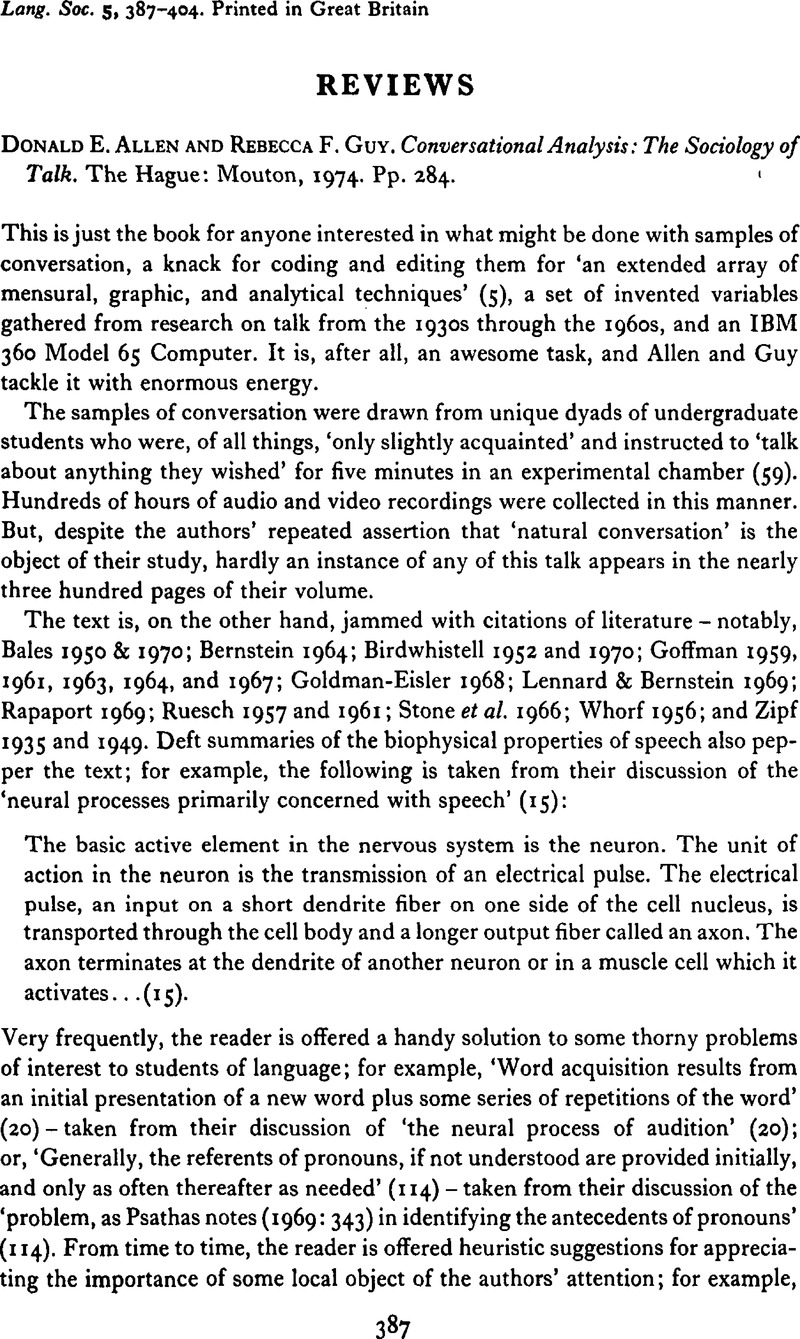Crossref Citations
This article has been cited by the following publications. This list is generated based on data provided by Crossref.
1978.
Studies in the Organization of Conversational Interaction.
p.
271.
1991.
The Ethnomethodological Movement.
p.
309.



